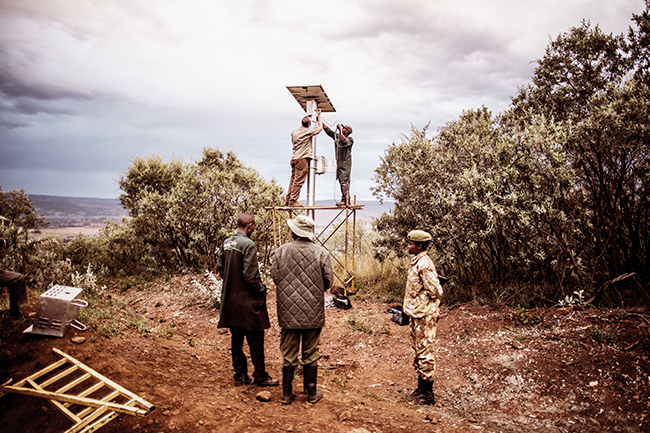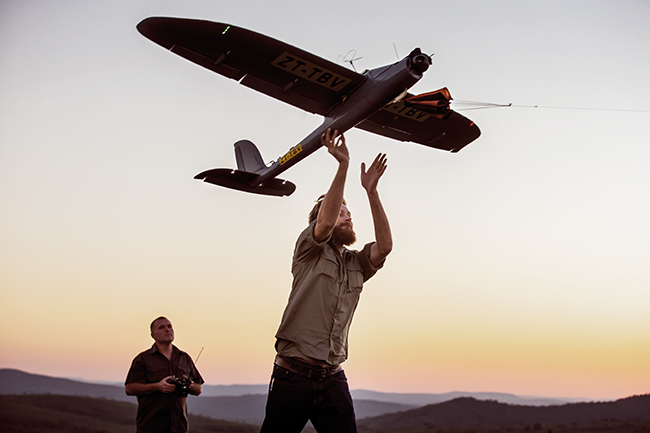Around midnight on Sunday, 2 July, rangers at Hluhluwe-Imfolozi game reserve in South Africa’s KwaZulu-Natal province heard a series of gunshots.
The next morning the remains of six rhino were found, their horns hacked off – all victims of a single night’s poaching attack. More than 7 000 rhinos have been killed in South Africa in the last decade, according to the Save the Rhino organisation. The animals are poached for their horns, which fetch massive prices in the Far East for their supposed medicinal qualities (there is no scientific basis in this belief at all). Currently, about three of the animals are killed a day (the national toll has been more than 1 000 per annum for the last four years). By contrast, the World Wildlife Fund (WWF), says just 13 were poached in 2007.
South Africa is home to about 24 000 rhinos – 21 000 white and 3 000 black – the most in the world, spread over national parks, provincial conservation entities and privately owned game farms and nature reserves. The majority are in the famed Kruger National Park, which borders Mozambique. The poaching gangs are run by organised crime syndicates and usually operate at night, entering parks after dark, killing animals and exiting before daylight. The latest technology, however, is enabling the authorities to fight back. Increasingly, the focus has been on using the latest infrared cameras, sensors and drone platforms to monitor people and vehicles, detect perimeter breaches in all weather and ‘take back the night’ from the criminals.
In the Kruger, former South African army general Johan Jooste was hired in 2013 to run the park’s anti-poaching offensive. Jooste is a firm advocate for the use of technology to defeat poaching. This ranges from lie-detector tests for all rangers to weed out poacher informers, to the latest example of high-tech – the 4m-high Postcode Meerkat, a solar-powered, tripod-shaped tower that includes a camera, radar and infrared laser.
Its name comes from the UK People’s Postcode Lottery, which supplied funding for it via the Peace Parks Foundation, and the mongoose-like meerkat, which is renowned for the way it stands up on its hind legs to survey the bush. It was developed by the state-owned Council for Scientific and Industrial Research. The Postcode Meerkat can scan about 100 km2 with its powerful equipment. At night, all mammals in the area show up on a screen as a dot, leaving a trail as they move. The movements of humans are quite different from those of animals, making them easy for an operator to identify. Rangers monitoring the screen can simply click on a dot to see a black and white close-up of an animal, or human. If a poaching gang is spotted – they usually work in groups of three – a crew of armed rangers is directed to intercept them.
‘We’ve come such a long way. We’ve tried so many things. We’ve flown drones and tried every sensor on the planet, and we’ve not found a better combination and better way to do area domination,’ Jooste told the Telegraph. ‘This will become a major tool in our toolbox, because nothing else gives you the night, and that’s what changes the game.’
The park also uses a system called Cmore, which is used to map areas where gangs may be active in the future by detailing the history of carcasses, trails and poaching incursions to build up a database of poaching activity. Although the Kruger has tried drones, it no longer uses them, but it has installed sensors around the perimeter of the intensive protection zone in the south of the park, which contains 5 000 rhino.
Kruger will soon introduce numberplate-recognition systems to monitor suspicious cars entering the park, as well as CCTV cameras. Jooste wants to buy four more Postcode Meerkats, at a cost of US$1 million each. ‘It’s pioneering work. We’re like a laboratory,’ he says.
Kruger lost 827 rhino in 2014, 826 in 2015, and 662 last year. While the number of dead animals is falling, the inverse is happening with the arrests of poachers (the number doubled between 2013 and 2016 from 123 to 281, according to the Telegraph). Experts say, however, that the success in the national park is driving poachers to other areas, hence the spike in attacks in KwaZulu-Natal.
Apart from efforts by national parks, private reserves are also developing technology to protect wildlife. For example, South Africa-headquartered technology company Dimension Data and US-based Cisco have teamed up to provide a system called Connected Conservation to monitor a privately owned game reserve (its location has not been disclosed) that neighbours the Kruger. A ‘war room’ in the park is the nerve centre of the monitoring network.
Phase one began with building a reserve area network and WiFi hotspots. Cameras and thermal imaging allowed for people to be tracked and vehicles to be monitored to provide a foundation of data to be analysed. Dimension Data executive Bruce Watson, who was the driving force behind the park’s system, says in a statement: ‘Every day, hundreds of staff, suppliers, contractors, security personnel and tourists enter and exit game reserves. The human activity in these environments is not monitored because, typically, the reserve is in a remote location with basic IT infrastructure and access control, manual security processes and very limited communication.’
According to Dimension Data, phase one has resulted in a 96% reduction in rhino poaching in the park. Phase two will involve camera-carrying drones and seismic sensors that can identify the difference between human and animal movement. Rangers armed with WiFi-enabled iPads are alerted as soon as the park’s perimeter has been breached. The park has a helicopter to dispatch a team to intercept the intruders and it claims that its response time will be under 10 minutes.

Several other countries on the continent have also been very proactive in harnessing tech to monitor their wildlife, mostly with help from the WWF. The organisation initiated the Wildlife Crime Technology Project in 2012, after receiving a US$5 million grant from Google to ‘create an umbrella of technologies that not only protect wildlife, but provide vital resources to rangers’ too.
A solar-powered stationary camera system that can be deployed on a park’s perimeter was developed, followed by a vehicle-mounted operation. Like the South African systems, the infrared cameras show rangers the difference between human and animal heat signatures in real-time feeds.
In March last year, the WWF partnered with rangers at Kenya’s Mara Conservancy (an NPO management company, which manages the Mara Triangle, around a third of the famous Maasai Mara National Reserve) and the Kenya Wildlife Service for field tests.
In October, the WWF rolled out the second phase of the thermal-imaging project, this time trialling it in Zimbabwe and Malawi, and using drones to carry the cameras. According to the organisation, the drones have flown more than 1 000 missions to date, assisting with anti-poaching efforts as well as mitigating human-elephant interactions.
‘Elephants sometimes wander out of parks and onto private lands, doing damage to fields. Farmers, whose livelihoods depend on those fields, sometimes harm or kill the elephants to keep them from destroying their crops,’ Colby Loucks, WWF’s director of the Wildlife Crime Technology Project, explains in an interview with IQ by Intel. ‘The drones can be used to scare off the elephants before these interactions take place,’ he says.
‘If these pilot projects prove successful, WWF plans to work with parks and private landowners across Africa to gain access to this technology. By developing and harnessing new technology, we can boost the effectiveness of rangers on the front lines in the battle against wildlife crime, and help ensure porous park borders become more secure,’ the WWF states in a press release.
Loucks says the next step is to scale up these models to equip other wildlife parks and reserves with similar technologies. ‘Eventually, we hope to expand our footprint across Africa and then Asia,’ he says. ‘The goal is to use tech to save wildlife around the world.’
















